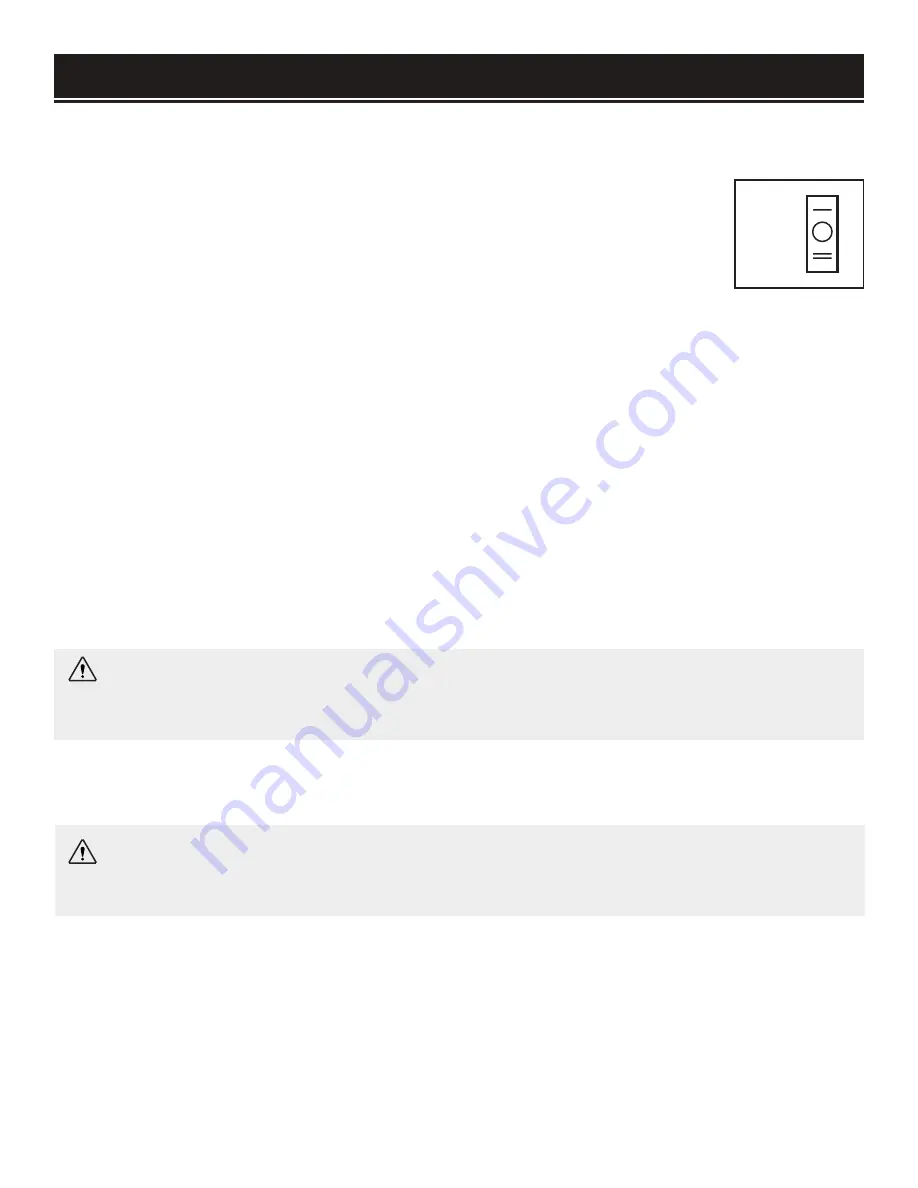
OPERATION
TWO SPEED SWITCH (FIG. 1)
1. Switch the heat gun off (position
"O")
and plug the heat gun into an AC 120V 60 Hz receptacle.
2. Toggle the two speed power switch to select the desired heat output and fan speed.
A. To select the low heat, low speed, toggle the switch up to the "I" setting.
B. To select the high heat, high speed, toggle the switch down to the "II" setting.
3. To turn the heat gun off, toggle the switch to the middle setting marked with the "
O.
"
4. Unplug the heat gun after use. Allow the heat gun to cool down, and then safely store the heat gun.
NOTE:
It is best to start on the low setting and test it on a small section of your workpiece, or a piece of
similar scrap material, and proceed to the higher setting if necessary. You may need to hold the heat gun
further away from your workpiece when using the higher setting. The low setting is a good starting place to
avoid overheating or damage to the workpiece.
REMOVING PAINT
1. Toggle the two speed switch to the low setting.
2. Aim the hot air nozzle towards the painted surface, leaving about 1 inch of space between the nozzle and
the surface. It will take approximately 15 seconds for the tool to reach its full heat potential.
3. Move the heat gun slowly and evenly from side to side to evenly distribute the heat.
WARNING:
Do not hold the heat gun over one spot; be sure to move the tool from side to side to
evenly distribute the heat. Keep your hands away from the nozzle while scraping the paint. If your
hand gets too close to the nozzle, you may get burnt. Wear heat-resistant gloves to prevent burns.
4. When the paint begins to soften and blister, you can begin scraping the paint off using a flat edge tool with
smooth, even strokes. If you wait too long to scrape the paint, it will cool and re-harden. Clean your scraper
often to create clean paint removal. Test the high setting if this method does not work.
NOTE:
• It is best to use a smooth, downward scraping motion to prevent as much damage to the surface as pos-
sible.
• Some paints will become tougher to strip with prolonged heating. Be sure to try different heating times to
develop the best method of paint removal for your specific job.
• This tool is designed to remove oil and latex based paints.
• This too will NOT remove stains or primers that are applied to wood.
• Protect surfaces that you do not want to remove paint from. For example, if you are stripping the paint
from a door, use a nonflammable material to shield the door frame to prevent stripping the paint from it.
WARNING:
Excessive heat may crack glass. DO NOT concentrate heat towards any type of glass
surface. If you are stripping paint from a surface that is near glass, use the glass protection noz-
zle. For example, if you are stripping a window pane, the glass protection nozzle must be used.
Low
High
OFF
Fig. 1
10
Summary of Contents for HG1022
Page 16: ...THANKS FOR REMEMBERING...
















